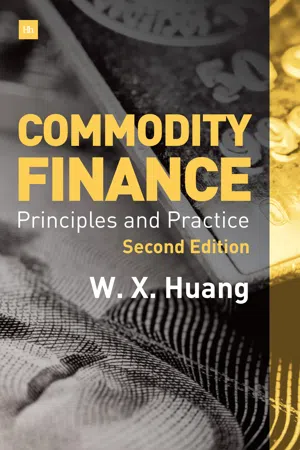![]()
Introduction
Commodity finance is a subject that used to be related to the privileged few, but now extends to almost every corner of the world.
Today, commodities represent most of the fast-growing markets worldwide. Commodities, historically misunderstood, very often understudied and underrepresented in literature, are now receiving the attention they deserve.
One of the reasons for the attention is due to the fact that price volatility in commodity markets has increased substantially in recent years, which directly influences the global market including the index of stock exchanges. Demand for commodities has led to serious competition and has built up giant trading commodity houses. Some modern war zones or territorial conflict may even have links with interests in commodities.
We have, nevertheless, barely seen any book which systematically explains and analyses commodity finance for the emerging markets. This can hardly be explained by lack of interest. Most of the books published so far, especially those from the academic world, seem to focus on hedging on the price volatility of commodity prices – an old topic, yet with many new developments.
Why this subject has scarcely been extensively covered is also due to the fact that this part of finance is a niche of which the knowledge is available within a limited number of players. There are a couple of hundred real commodity finance bankers in the world. Not many of them are interested in writing a book. Professors of finance in the universities may not have been privileged to have exposure to this part of finance.
Obviously, it is too ambitious to write a comprehensive handbook for commodity finance. This book only intends to have a systematic discussion on the principles and practice of commodity finance. On the one hand, the intention is indeed a summary of what is happening in commodity finance with a hands-on approach. On the other hand, all the relevant aspects of this topic will be covered in a systematic way, that is, the book is intended to serve both as a textbook for students as well as a reference book for practitioners.
The combination of principles and practice is always a challenge – ‘principles’ tend to outline a framework at a macro level, whereas ‘practice’ describes the daily operation and its problems at a micro level. Whether this book has achieved such a modest target is certainly subject to the judgment of the readers.
Structure and logic
It is not surprising that, up until the end of the last century, commodity finance – the knowledge and expertise of it – is limited to a couple of hundred privileged people, mainly in Europe.
Books so far published on commodities and commodity finance can be divided into two categories: the description of ‘commodity markets’ and the ‘structured commodity finance’, which is still a vague or loose concept covering subjects from tolling, advance payment finance to pre-export finance. These are, of course, part of commodity finance, but not all of it.
Ideally, a book on ‘principles and practice of commodity finance’ should cover commodities, commodity markets, commodity trade and the finance of the commodity trade. This is the skeleton of this book.
Why and how
An incidental interview, which was intended to find a sponsor for my PhD research, opened the door for my banking career in commodity finance. For more than 20 years, I have changed banks as an employee and the banks for which I worked have changed their names. I, however, remain in this domain.
The book starts with a bird’s-eye view on commodity trade and finance as an introduction. Chapter 1 defines the concepts and scope of coverage, which will enable the discussion later to be more consistent and straightforward.
Chapter 2 gives a macro description of the three major sectors under commodity finance: soft commodities, hard commodities, and energy, as well as their global flow. This chapter develops further into a discussion of commodity finance and the emerging markets, as most commodity export countries are emerging market countries. It then shifts to a micro level for the case of Ethiopia, where commodity finance is done in special forms and via unique mechanisms. Together, these two chapters serve as a background for fundamentals.
Chapter 3 describes the special mechanisms and products of commodity finance. From plain vanilla products to the complicated structures of commodity finance, all are presented here.
As a large amount of commodity finance involves both bank and country risk, Chapter 4 particularly explores this subject.
Chapter 5 summarizes the risk management principles in commodity finance, with practical cases.
Chapter 6 is an organizational aspect of a typical commodity finance bank. From my limited reading, there is hardly any literature which can be found on this practical subject. Whereas departments and their functions within commodity banks may vary from one commodity bank to another, some common infrastructure is analyzed.
Chapter 7 ventures into the subject of a forward vision for commodity finance.
Upon the request of my readers after the first version, I have added an extra chapter – Chapter 8 – which presents a series of real-life cases in commodity finance.
Target readers
Although the sequence of chapters is organized with progress along the knowledge line, the book is written, on purpose, for separate reading and reference.
As such, the book is first intended f...
